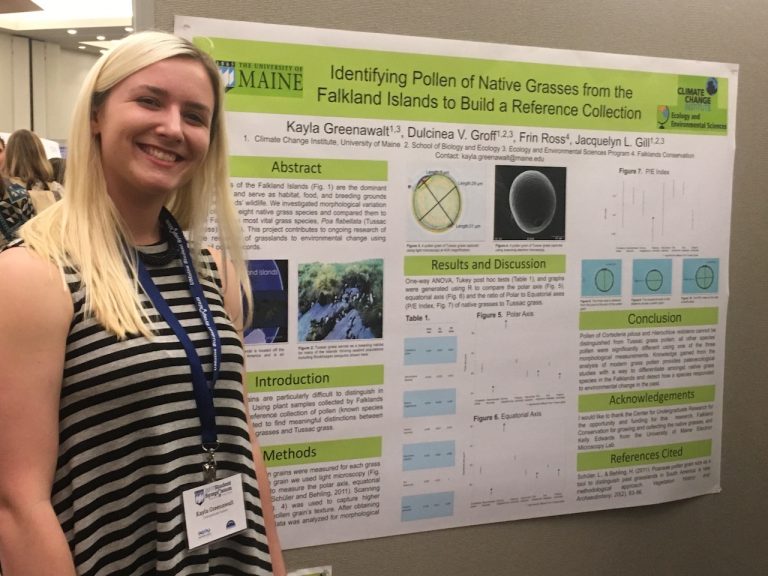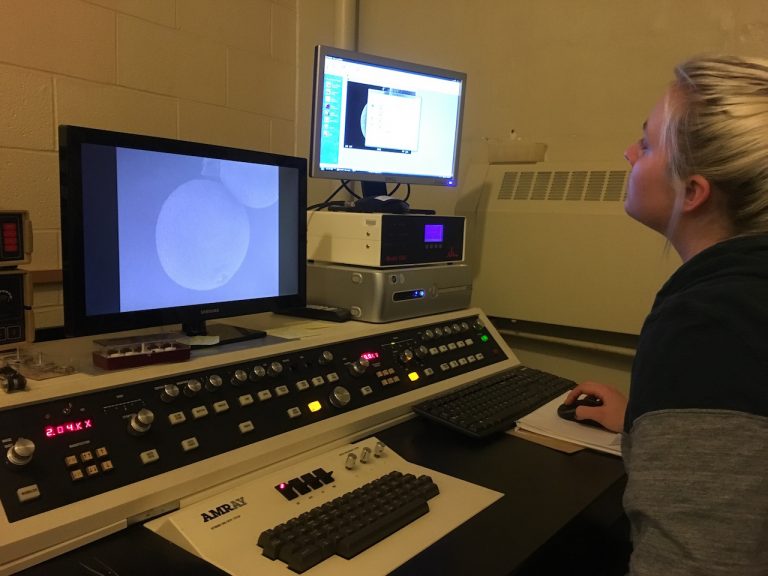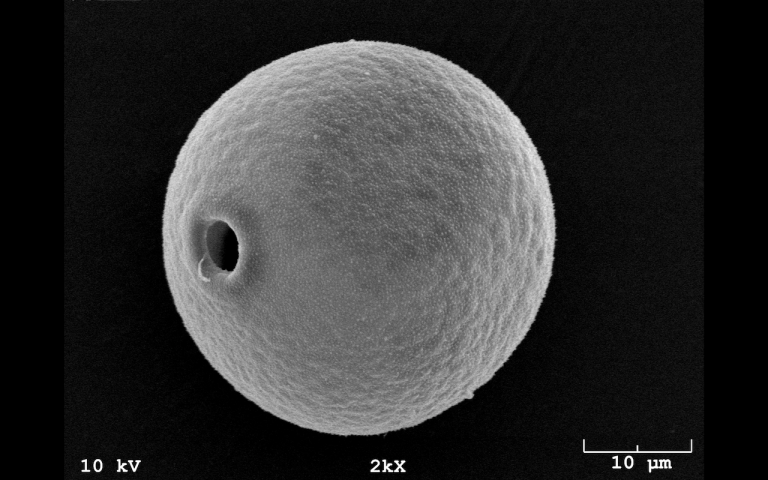Kayla Greenawalt, EES Alumna Class of 2019
As an awardee of the 2016-17 Academic Year Fellowship from the Center for Undergraduate Research (CUGR) project, Kayla Greenawalt worked with PhD Candidate, Dulcinea Groff, to analyze pollen grains of native grass species from the Falkland Islands. Using scanning electron microscopy (SEM) housed in the Electron Microscopy Laboratory, Kayla was able to capture highly detailed images of pollen grains obtained through concentrating grass samples collected and contributed to the study by Falklands Conservation.
Kayla noted that “SEM is particularly helpful for this project because we are trying to figure out if there is a significant difference between the pollen grains of Tussac grass (Poa flabellata) and other grasses of the Falklands to support other ongoing work.” The two images below are of a Tussac grass pollen grain and another native grass, Fuegian Couch grass (Elymus magellanicus). Tussac grass is one of the most vital plant species in the Falklands and serves an important role by protecting the ground from erosion, providing food for livestock, sheltering animals from the persistent winds, and are critical breeding habitat for many of the islands’ seabirds. Kayla’s work supports ongoing work to understand how coastal Tussac grasslands responded to environmental change over the past 15,000 years in the Falkland Islands.
Kayla’s work culminated in the presentation of a poster of her research at the annual Harold W. Borns, Jr. Symposium alongside researchers and faculty of the Climate Change Institute (April 13-14, 2017) and among 1,200 coauthors and presenters at the UMaine Student Symposium (April 24, 2017).
Image credit: Kayla Greenawalt & Dulcinea Groff




